
Opale d'Éthiopie : Histoire, symbolisme, significations et bien plus encore !
 Les opales proviennent du monde entier, mais de nombreux gisements produisent des opales uniques et d'une beauté incomparable. En Afrique, on trouve notamment les opales éthiopiennes aux couleurs éclatantes, souvent appelées opales de Welo.
Les opales proviennent du monde entier, mais de nombreux gisements produisent des opales uniques et d'une beauté incomparable. En Afrique, on trouve notamment les opales éthiopiennes aux couleurs éclatantes, souvent appelées opales de Welo.
De nombreux passionnés d'opales considèrent l'Australie comme la capitale mondiale de l'opale , mais les opales éthiopiennes sont-elles authentiques ? Absolument !
Alors qu'environ 95 % des opales mondiales proviennent de mines australiennes, les récentes découvertes d'opales en Éthiopie placent ce pays africain juste derrière l'Australie en termes de production et de qualité . Plus récemment encore, une opale noire d'Éthiopie a joué un rôle essentiel dans le film Uncut Gems ( 2019) !
Si vous êtes novice dans le monde des opales, vous ne connaissez peut-être cette gemme que comme la pierre de naissance traditionnelle du mois d'octobre . Vous avez peut-être entendu parler de la « malédiction de l'opale » ou vous la connaissez simplement pour ses couleurs kaléidoscopiques ; mais il y a tant d'autres choses à apprendre, notamment sur les opales d'Éthiopie.
Dans ce guide, vous découvrirez les propriétés physiques et spirituelles de l'opale éthiopienne, ainsi que l'histoire et le symbolisme de ces gemmes exceptionnelles !

Qu'est-ce que l'opale éthiopienne ?
L'opale welo éthiopienne est un type d'opale relativement nouveau découvert dans les régions montagneuses du nord de l'Éthiopie, et plus particulièrement dans la province de Wollo.
Quelle est la différence entre une opale et une opale d'Éthiopie ? Techniquement, aucune, car les opales d'Éthiopie sont bien des opales, avec la même dureté (5,5 à 6,5 sur l'échelle de Mohs) . Cependant, il existe de nombreux types d'opales , les principales catégories étant les opales précieuses et les opales communes .
Les opales précieuses se distinguent par leurs jeux de couleurs , tandis que les opales communes sont celles qui n'en présentent pas. Les opales d'Éthiopie sont prisées pour leurs jeux de couleurs éclatants, qui se déclinent en une multitude de teintes et de motifs.
L'une des caractéristiques distinctives des opales éthiopiennes est leur nature hydrophane : leur surface poreuse absorbe l'eau, modifiant ainsi leur apparence, leur taille et leur stabilité une fois immergées. Ces pierres sont opaques à translucides, comme beaucoup d'opales, mais l'opale éthiopienne devient transparente au contact de l'eau !
En termes de couleur , les opales éthiopiennes se déclinent en plusieurs variétés, allant des couleurs unies comme le noir, le rose ou le bleu aux arcs-en-ciel de teintes sur différents tons de fond .
Cela dit, quelles sont les différentes variétés d'opale éthiopienne ?
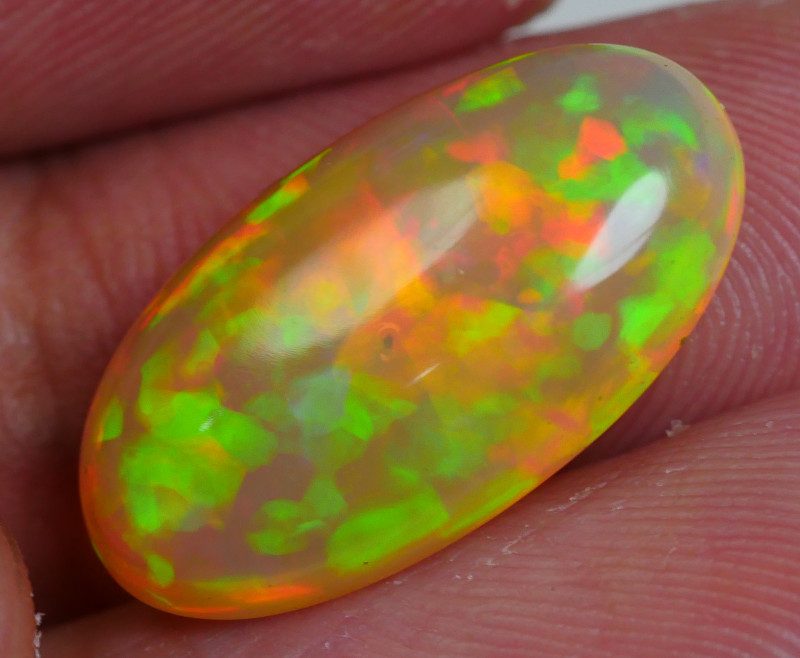
Types d'opale éthiopienne
Toutes les opales d'Éthiopie présentent un jeu de couleurs, mais leur teinte de fond diffère. Les trois principaux gisements (que nous aborderons plus en détail ultérieurement) produisent des variétés distinctes, notamment :
Opale de feu précieuse : Opales abondantes et translucides de la province de Wollo, présentant la couleur de fond rouge, orange ou jaune des opales de feu et un jeu de couleurs caractéristique des opales précieuses, avec souvent des reflets violets et verts éclatants.
Opale noire : Opales naturellement noires rares qui ne sont pas hydrophanes, que l'on trouve dans la mine de Stayish de la province de Wollo, bien que de nombreuses opales éthiopiennes soient traitées pour être noires.
Opale de Shewa ou de Mezezo : Les premiers spécimens éthiopiens ont été découverts en 1994 dans la province de Shewa ; ils sont généralement brun rougeâtre, orange ou brun chocolat, mais présentent souvent des problèmes de craquelures , un type de dommage où le séchage entraîne des fissures en forme de toile d’araignée.
Opale précieuse blanche : Opales éthiopiennes de couleur blanche, aux reflets chatoyants et d’une stabilité bien supérieure à celle des opales de Shewa. On les trouve généralement près de Wegel Tena.
Ces exemples ne couvrent pas tous les types d'opales éthiopiennes, car le nombre de couleurs et de motifs de fond rivalise avec celui des opales australiennes. D'ailleurs, quelles sont les différences entre les opales australiennes et éthiopiennes ?
Les principales différences entre les opales australiennes et éthiopiennes résident dans le fait que les opales éthiopiennes sont généralement plus grandes, plus rares et moins chères que les opales australiennes.
Une différence significative entre les opales australiennes et éthiopiennes réside dans leurs processus de formation, que nous aborderons ensuite !
Propriétés de l'opale d'Éthiopie
Contrairement à l'opale australienne qui se forme profondément sous terre, l'opale éthiopienne se forme en haute montagne. L'activité volcanique est à l'origine de la formation de ces opales hydrophanes, qui se présentent sous forme de petites boules noueuses plutôt que de veines comme la plupart des opales.
Une fois extraites, il est temps de tailler et d'évaluer ces opales ; mais comment sont-elles classées ? Comme cette pierre est nouvelle dans l'industrie, le classement des opales d'Éthiopie est complexe et quelque peu subjectif, mais elles sont généralement classées selon leur motif, leur brillance, les traitements qu'elles ont subis et leur couleur.
Modèle
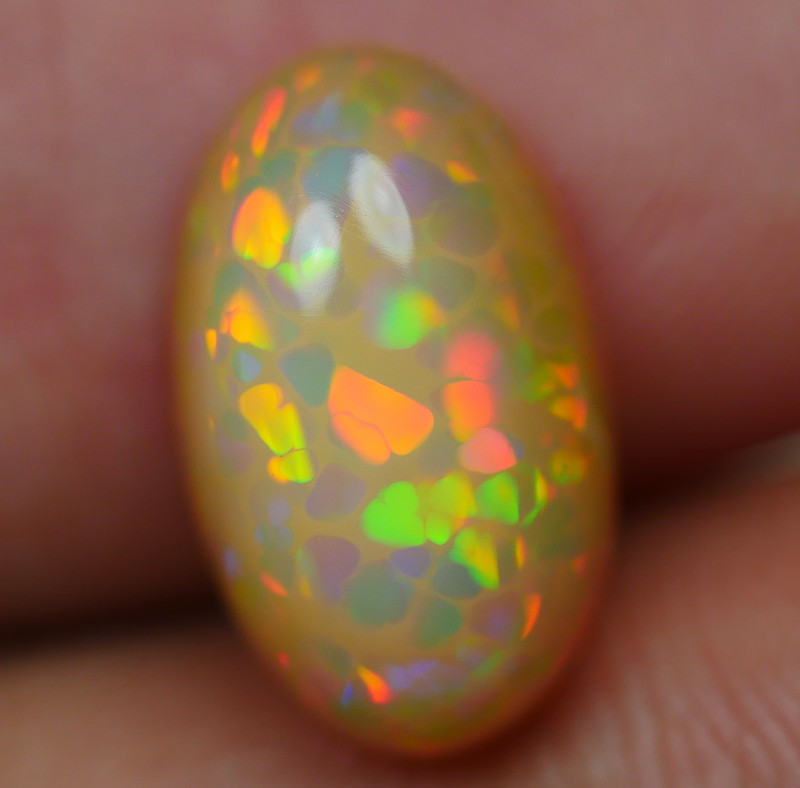
Les opales d'Éthiopie sont uniques par la variété et l'éclat de leurs motifs, allant du Welo Broad Flash au Fire Cloud ! Le motif le plus recherché est le nid d'abeille, exclusif à l'opale d'Éthiopie, où l'opale commune forme une ligne d'inclusions en forme de toile d'araignée à travers la pierre. Les pierres à motif nid d'abeille sont généralement taillées en cabochon .
Luminosité
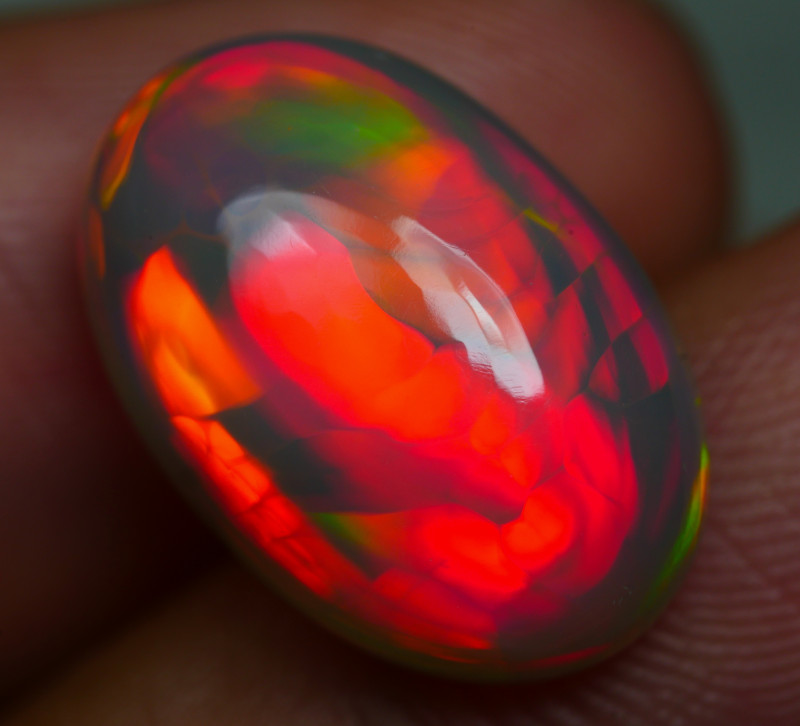
La brillance désigne le « feu » d'une pierre, c'est-à-dire les éclats colorés dus à la dispersion de la lumière. Le feu de nombreuses opales d'Éthiopie présente un rare effet tridimensionnel. Les éclats bleus et verts sont typiques, bien que de rares éclats rouges puissent apparaître. En général, les pierres au feu plus vif et plus intense sont plus chères.
Traitements
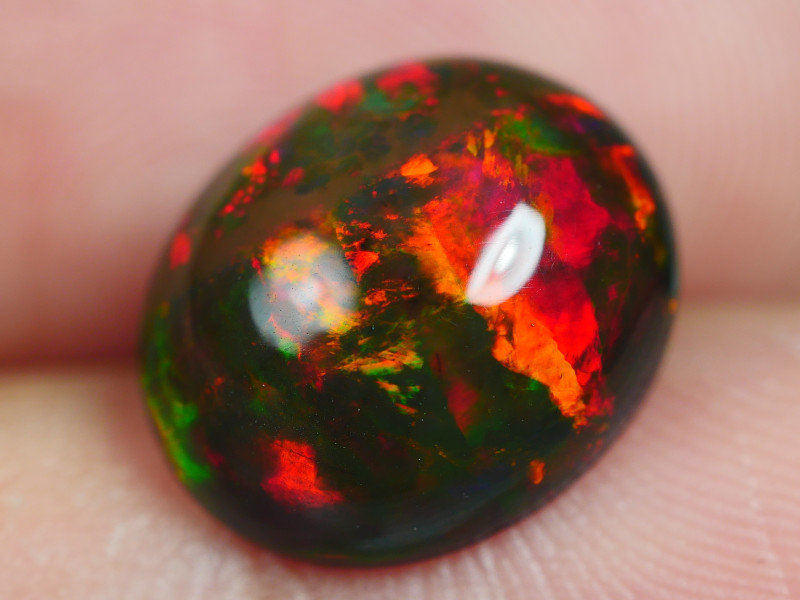
Un nombre important d'opales éthiopiennes ont été traitées. Outre les traitements de remplissage de base visant à réduire les craquelures, les trois principales techniques sont le traitement à l'acide sucré, le fumage et la teinture.
Le traitement acide-sucre consiste à faire tremper l'opale dans de l'eau sucrée, puis dans de l'acide sulfurique. Il en résulte une multitude de mouchetures et de taches à la surface qui assombrissent la teinte de fond, intensifiant ainsi l'éclat des jeux de couleurs.
Le traitement à la fumée donne des résultats similaires. Ce procédé consiste à envelopper l'opale dans du papier, à la chauffer dans un récipient fermé, puis à la refroidir et à la laver. Les opales hydrophanes supportent bien ce traitement, mais il les rend plus difficiles à détecter.
La nature hydrophane des opales éthiopiennes se prête également bien à la teinture, ce qui est courant sur les opales éthiopiennes violettes ou roses vives, car celles-ci n'existent pas à l'état naturel.
Couleur

Les opales d'Éthiopie peuvent être blanches, noires, bleues, rouges, roses, oranges ou brunes, selon la mine. Les opales cristallines incolores proviennent de la mine de Wegel Tena.
La couleur de fond n'est pas aussi déterminante pour la valeur d'une opale d'Éthiopie que pour celle d'une opale noire, par exemple. Son principal intérêt réside dans son influence sur la brillance et les motifs de la pierre.
La couleur des opales éthiopiennes dépend en partie de leur province d'origine, un élément fondamental de l'histoire de cette pierre !
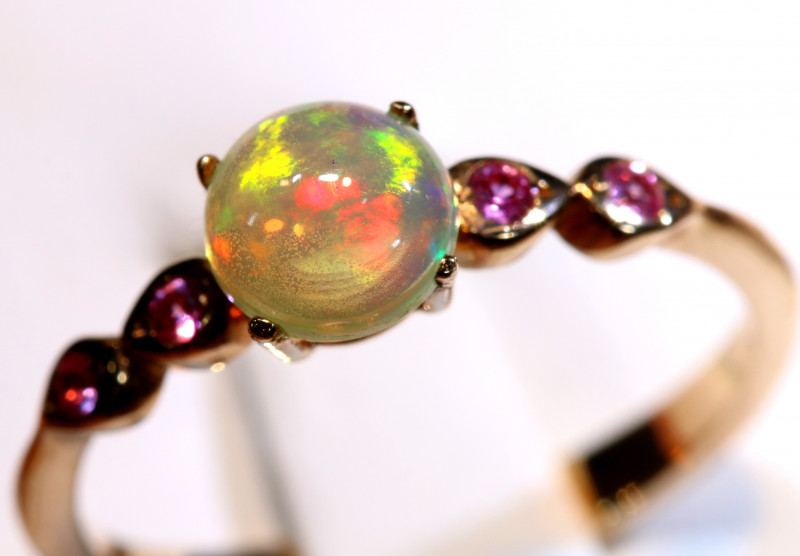
Histoire de l'opale éthiopienne
La découverte moderne d'opales éthiopiennes ne date que des dernières décennies. Cependant, les plus anciennes opales trouvées dans une grotte kenyane, datant d'environ 4000 avant J.-C., étaient probablement des opales éthiopiennes ! Les anthropologues pensent que les premiers ancêtres de l'homme utilisaient ces opales pour fabriquer des outils.
Nos ancêtres préhistoriques ne les appelaient pourtant pas « opales ». Le nom « opale » vient du sanskrit ancien *upala* , qui signifie « pierre précieuse », et plus tard du grec * opallios*, qui signifie « voir un changement de couleur ».
En 1994, des mineurs découvrent le premier gisement d'opales d'Éthiopie dans la province de Shewa. Ces précieuses opales, de couleur brune, brun rougeâtre ou orange, se trouvent à l'intérieur de nodules de roche volcanique. Malheureusement, elles sont aussi sujettes au faïençage.
En 2008, des mineurs ont découvert un second gisement dans la province de Wollo, près de Wegel Tena. Les opales de Wegel Tena étaient plus résistantes que celles de Shewa et se déclinaient en de plus belles variétés, comme les opales blanches, cristal, feu et, plus rarement, noires. L'appellation « opale de Welo » est rapidement devenue courante pour désigner les opales de ce gisement.
Il est intéressant de noter que les opales blanches de Wegel Tena présentent une forte teneur en baryum, ainsi que des inclusions de pyrite et de carbone. Certains spécimens arborent également des motifs en « doigts », où des couches d'opale commune et précieuse créent un jeu de couleurs en colonnes évoquant des doigts.
La dernière découverte majeure remonte à 2013 et a eu lieu à la mine de Stayish, également située dans la province de Wollo. Certains spécimens extraits étaient des opales blanches ou cristallines, mais la majorité étaient des opales noires ou gris foncé.
Aujourd'hui, le gisement de Wegel Tena est réputé pour ses magnifiques opales blanches et cristallines, tandis que la mine de Stayish est connue pour ses opales noires.
L'opale éthiopienne présente généralement des jeux de couleurs plus marqués que l'opale australienne, et son extraction est facilitée par les galeries horizontales par rapport aux puits verticaux. Les mineurs éthiopiens ont déjà extrait plus de 1 500 kg d'opale brute d'Éthiopie !
Au-delà de la géologie, que signifie l'opale sur le plan spirituel ?
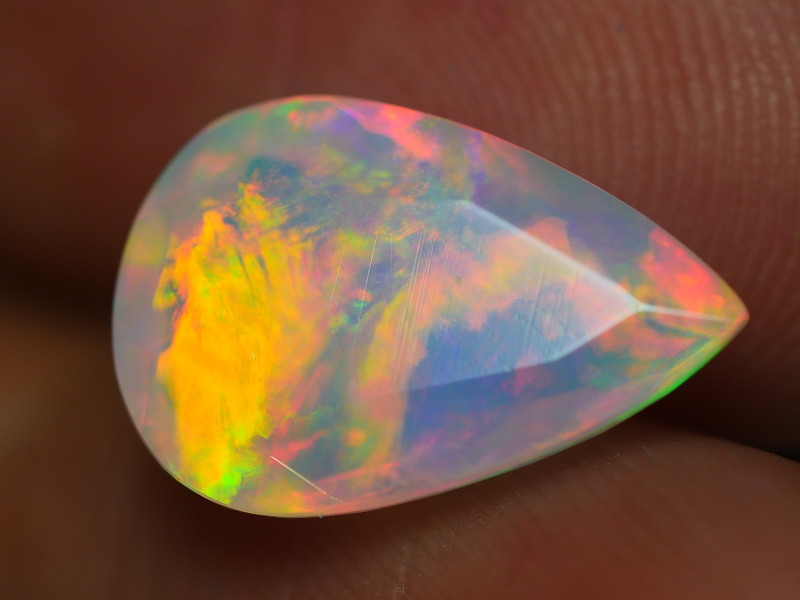
Signification et symbolisme de l'opale éthiopienne
Comme les autres opales , l'opale d'Éthiopie symbolise l'espoir, la chance et l'innocence. De plus, elle représente l'enthousiasme et la créativité.
Quelle est la signification de l'opale de feu éthiopienne ?
Les opales de feu symbolisent la passion, la chaleur et l'amour. Elles représentent une profonde guérison émotionnelle et la confiance que tout arrive pour une raison. Offertes en cadeau, ces pierres sont un symbole de loyauté et d'amitié.
Originaires d'Éthiopie, ces joyaux possèdent déjà un riche patrimoine culturel. Surnommée la « terre des origines », l'Éthiopie est le berceau de l'humanité, le pays du premier café et la seule nation africaine à posséder son propre système d'écriture.
D'autres cultures ont également attribué à l'opale éthiopienne ses propres significations spirituelles. Le folklore arabe raconte que les opales descendent du ciel à travers les éclairs, tandis que les Aztèques les utilisaient comme protection contre les malédictions telles que le mauvais œil.
Quelles sont les propriétés mystiques de l'opale aujourd'hui ?
À quoi servent les opales éthiopiennes ?
Les propriétés physiques de l'opale éthiopienne sont similaires à nombre de ses propriétés curatives, notamment sa composition hydrophane et ses reflets de couleur.
Tout comme ces opales hydrophanes absorbent l'eau, elles peuvent aider à lutter contre la déshydratation, la rétention d'eau et la fatigue. Ces pierres auraient également des bienfaits pour la santé des yeux, des cheveux et de la peau !
Sur le plan émotionnel, l'opale d'Éthiopie est bénéfique à toute personne en proie à l'indécision, aux difficultés de communication ou au pessimisme. Ses éclats de couleur vive invitent à s'appuyer sur ses forces, à se libérer de la négativité et à se consacrer à des activités créatives.
La dimension spirituelle de l'opale d'Éthiopie est source d'illumination et de purification, favorisant un sentiment de sérénité. Une affirmation à méditer avec l'opale d'Éthiopie est : « Je suis purifié(e) du passé et prêt(e) pour l'avenir. »
Chakra d'opale éthiopienne
Pour la guérison des chakras, l'opale éthiopienne est liée au chakra coronal. Situé au-dessus de la tête, ce chakra régit la réalisation de soi et la spiritualité.
Lorsque le chakra coronal est bloqué, vous pouvez ressentir une instabilité ou une résistance à l'évolution. L'opale éthiopienne peut ouvrir ce chakra, apportant sagesse et connexion spirituelle avec l'univers.
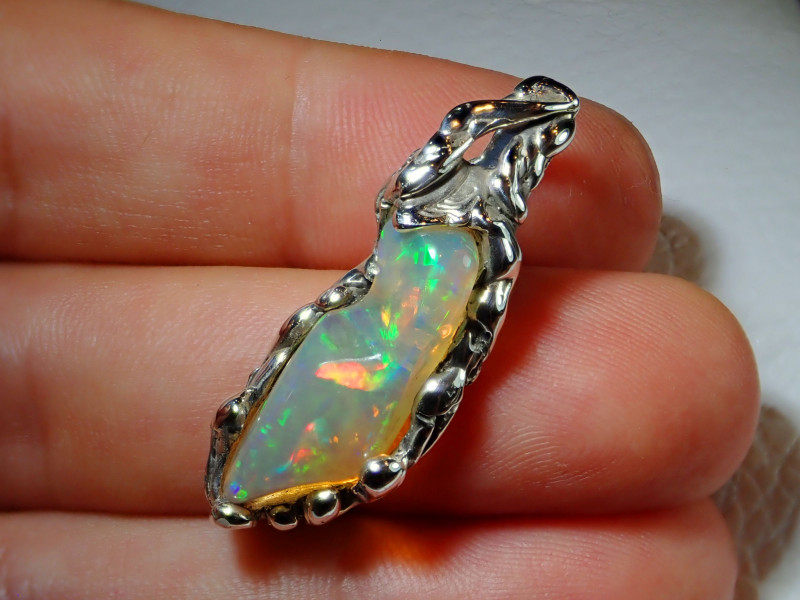
Envoûté par l'opale éthiopienne ?
Que vous préfériez l'opale noire, blanche ou de feu, vous trouverez tout ce que vous désirez et bien plus encore parmi les opales d'Éthiopie. Forte de son histoire riche et de ses vertus thérapeutiques, porter une bague en opale d'Éthiopie est une façon idéale de célébrer votre anniversaire en octobre ou tout simplement d'affirmer votre style unique !
Rechercher le Opal Encyclopedia
Enchères associées
Articles Liés
Tous les poèmes figurant sur cette page appartiennent à leurs auteurs respectifs. Toute reproduction non autorisée est interdite.
9th May 2018
Internet a révolutionné nos habitudes d'achat et il est désormais possible d'acheter des opales en ligne. Laissez-nous vous guider : quels critères prendre en compte et comment procéder.
5th Mar 2019
L'opale cristal est une variété d'opale réputée pour sa translucidité et ses reflets irisés éclatants. Ce guide vous dévoilera tout ce qu'il faut savoir sur cette pierre splendide.
17th Jul 2018
Derniers articles
L'opale noire est la variété d'opale la plus recherchée, sa base profonde lui conférant un arc-en-ciel de reflets. Découvrez les usages, les propriétés, l'histoire et la valeur de l'opale noire !
7th Dec 2025
Découvrez comment les opales sont classées et quels facteurs influencent leur prix. De la couleur à la brillance, en passant par la taille et l'origine, apprenez comment chaque type d'opale est évalué, avec des exemples de fourchettes de prix.
19th Jul 2023
Embarquez pour un voyage et découvrez le pouvoir guérisseur des opales grâce à notre auteure invitée, Vivien Schapera, spécialiste des techniques de guérison par les cristaux !
20th May 2023
Catégories d'articles
All there is to know about Opals including Black Opals, Ethiopian Opals & Boulder Opal
14 les articles
Check out our fascinating information and articles on all things amazing in the Opal world
41 les articles
Opal Auctions sellers who are approved as opal Verified Sellers
4 les articles





